Abstract
The fins of teleosts are appendices capable of regenerating by an epimorphic process that completely restores in a few days the original shape and size. After a partial amputation, the process that follows consists of: wound healing, blastema formation and cell differentiation to form a particular cell population responsible for the building of the different tissue elements. The present work deals with the histochemical and ultrastructural characterisation of the extracellular matrix (ECM) components in different blastemal regions. In the subepidermal space of the tip of a regenerating ray, two zones can be identified: the blastema proper (BP) that occupies the more apical region and extends proximally along the centre of the regenerating ray, and the actinotrichial blastemic region (ABR), located laterally to the former, about some micrometres beneath the tip and tightly related with the palisade of the actinotrichia. Hyaluronate is the more prominent glycosaminoglycan (GAG) in BP whereas sulphated GAGs and collagen are scarce in distal portions but they can be identified proximally. In the ABR a network composed mainly of sulphated GAGs and in part of collagen is developed. This network connects the actinotrichia of each palisade and extends around them. The significance of the ECM components in the morphogenetic processes of the regenerating rays is discussed. In addition a model for the synthesis of lepidotrichia by lepidotrichium-forming cells, differentiated from blastemal cells, is given.
Full text
PDF
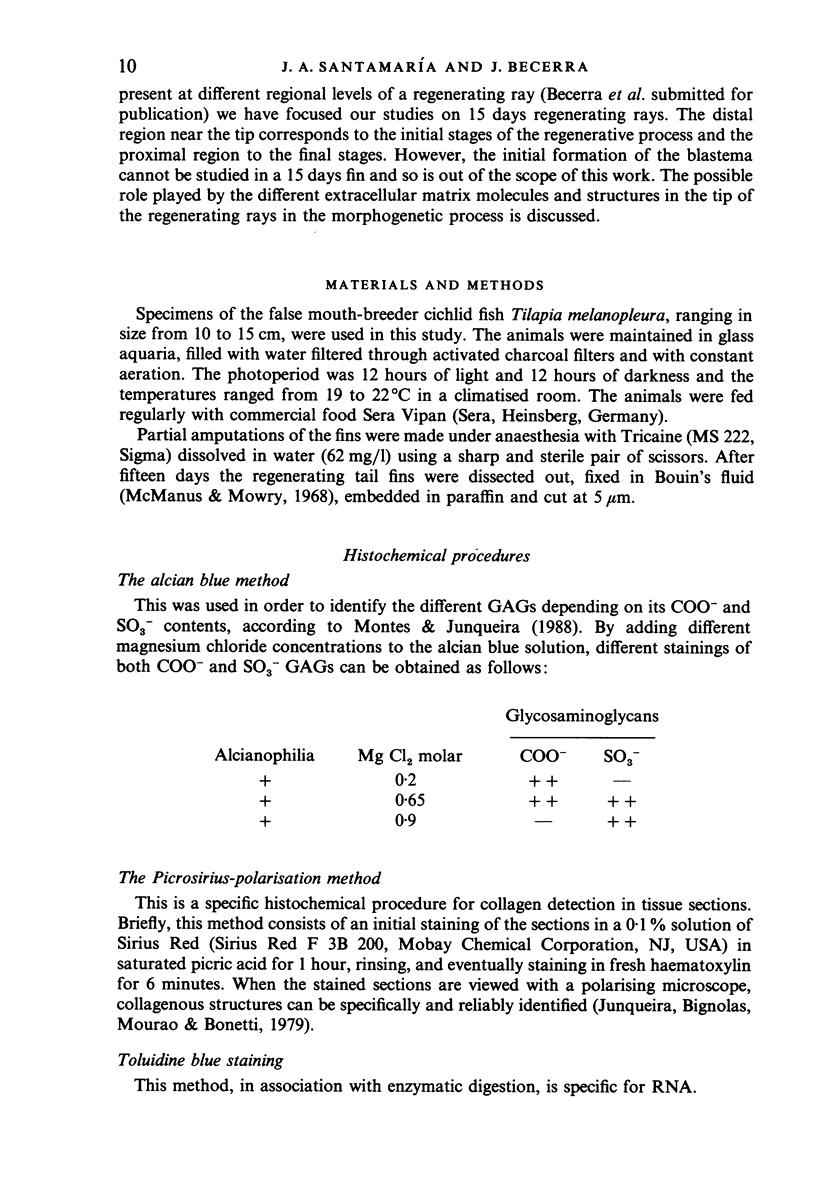

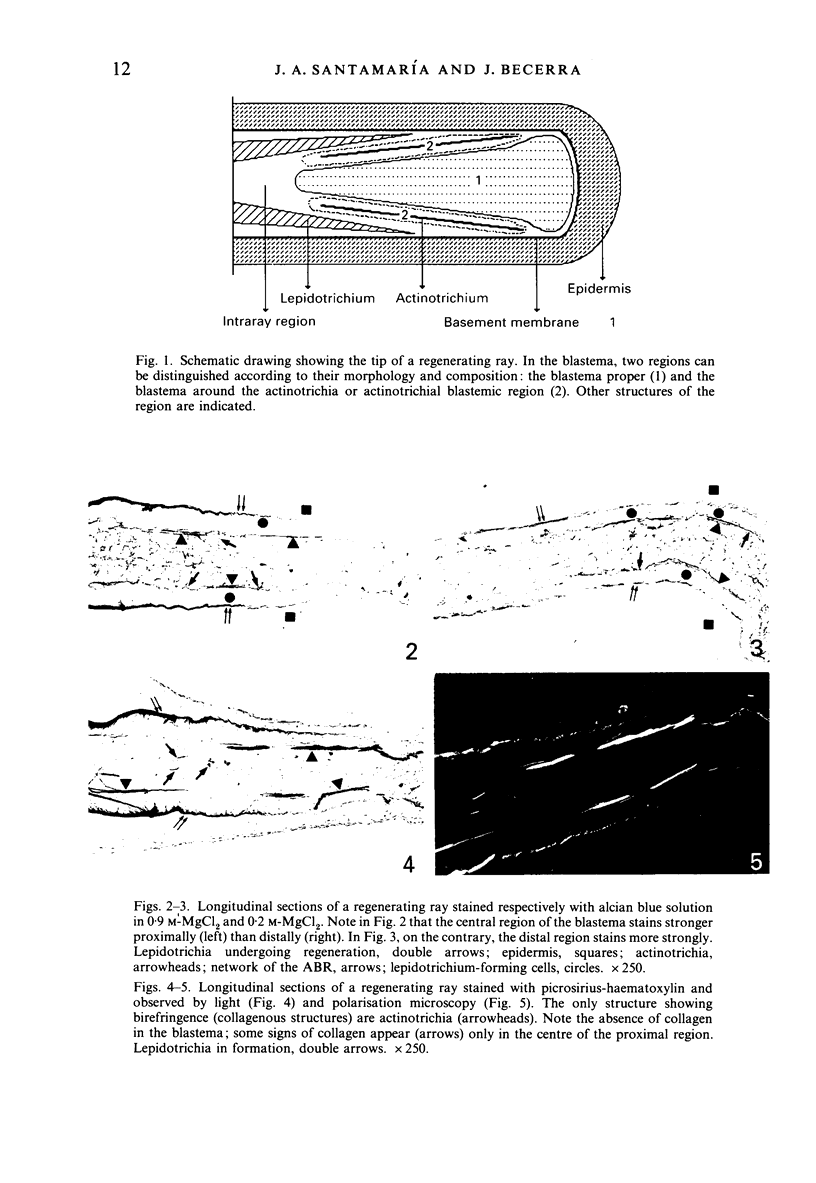
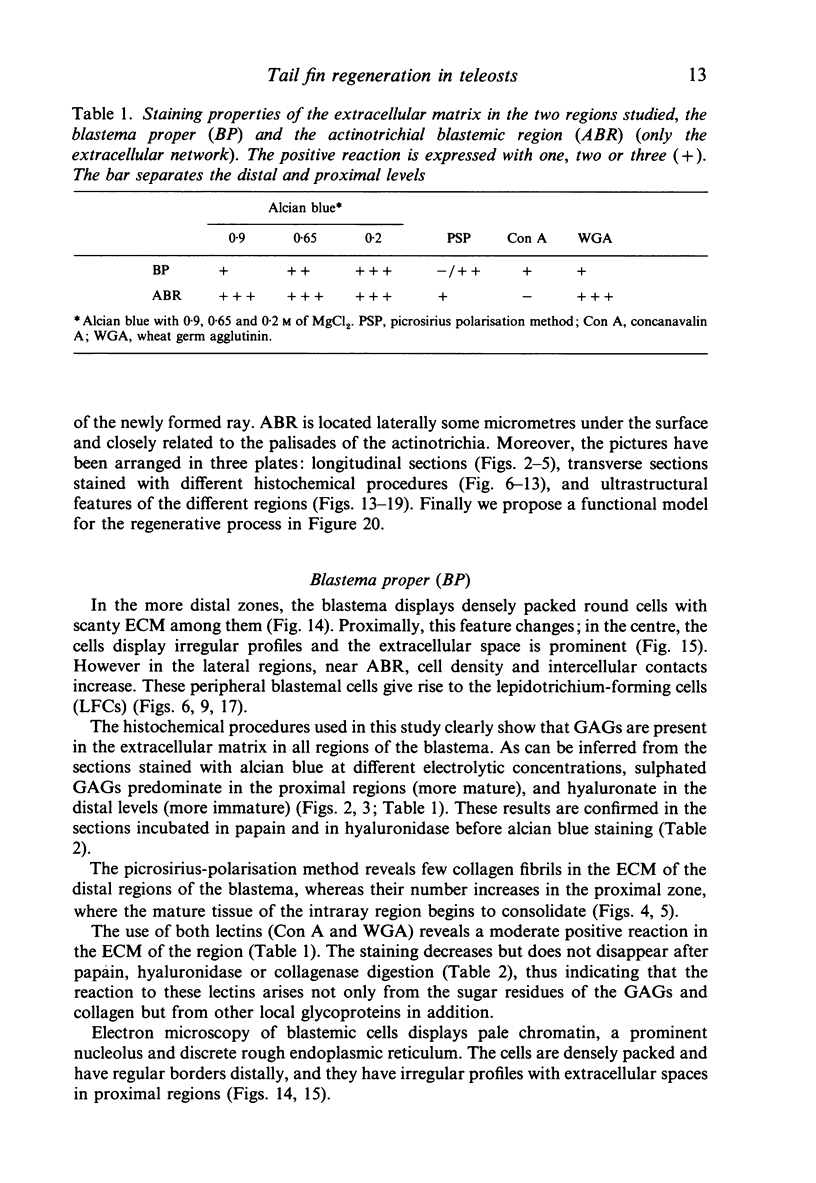
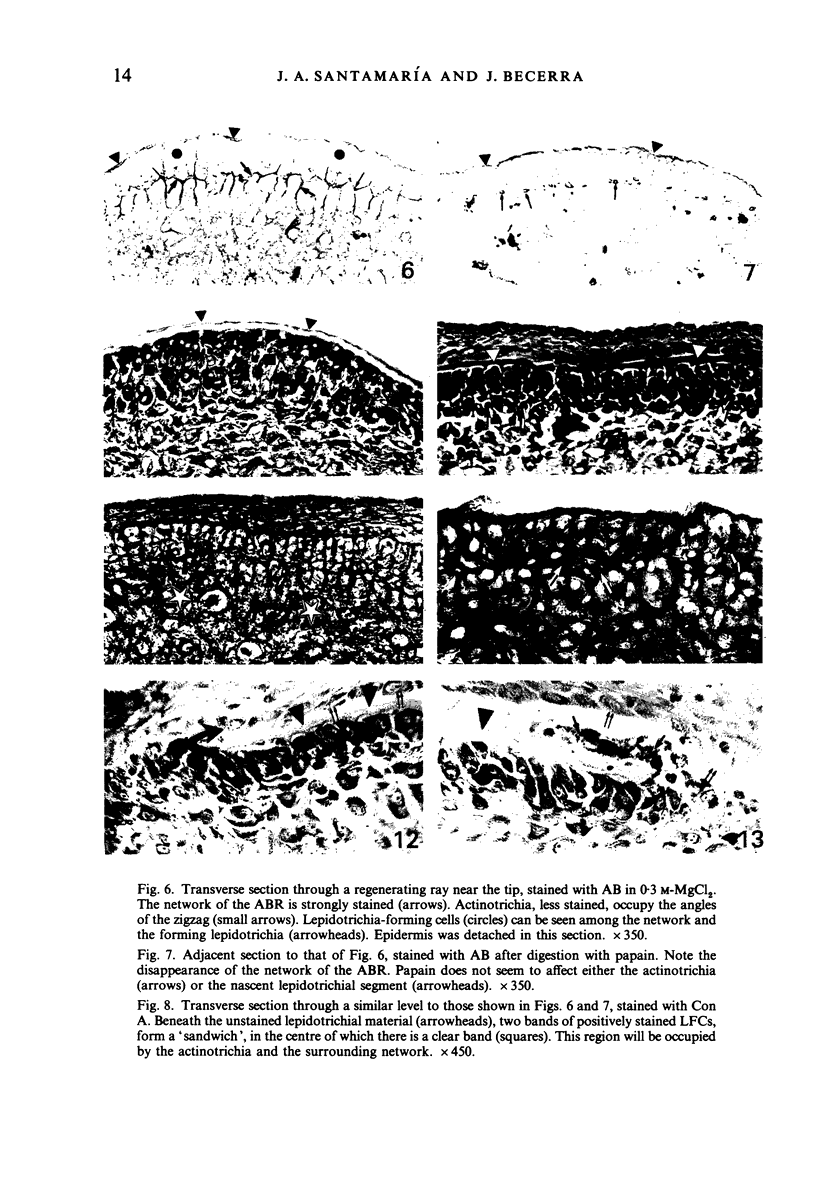

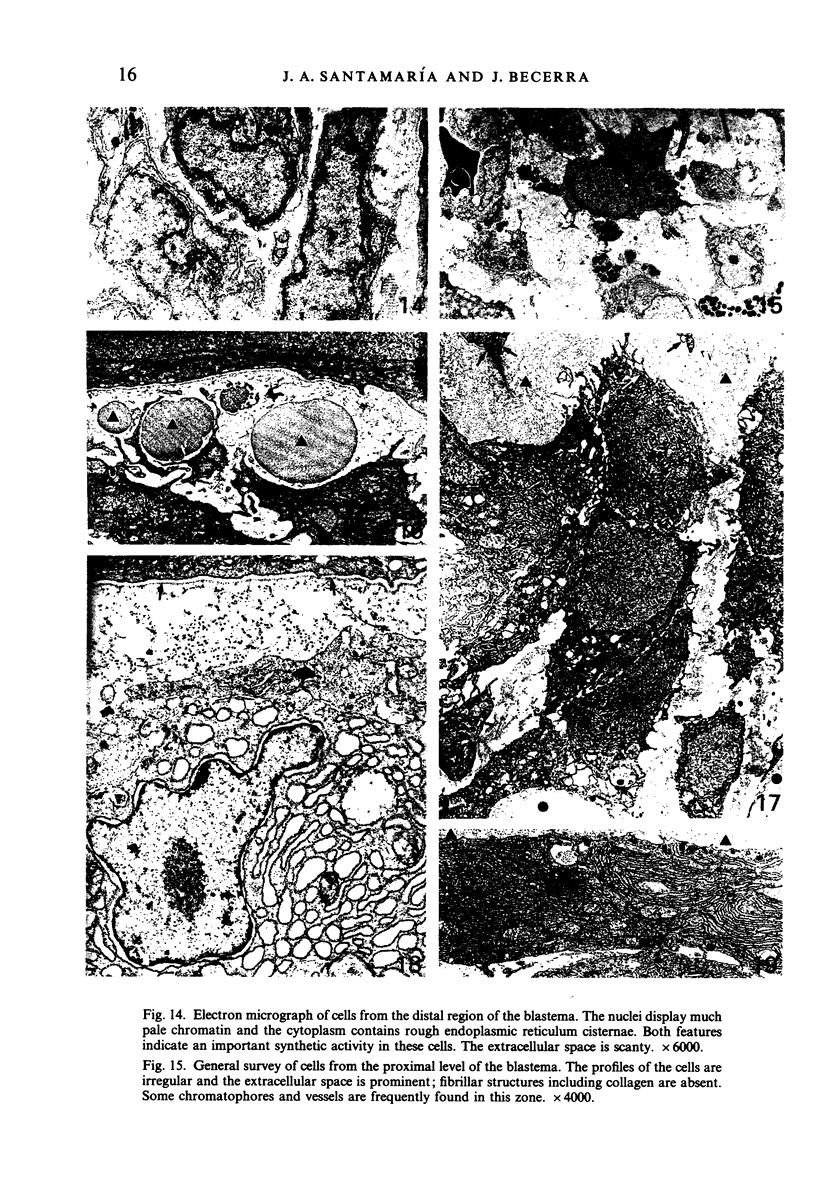
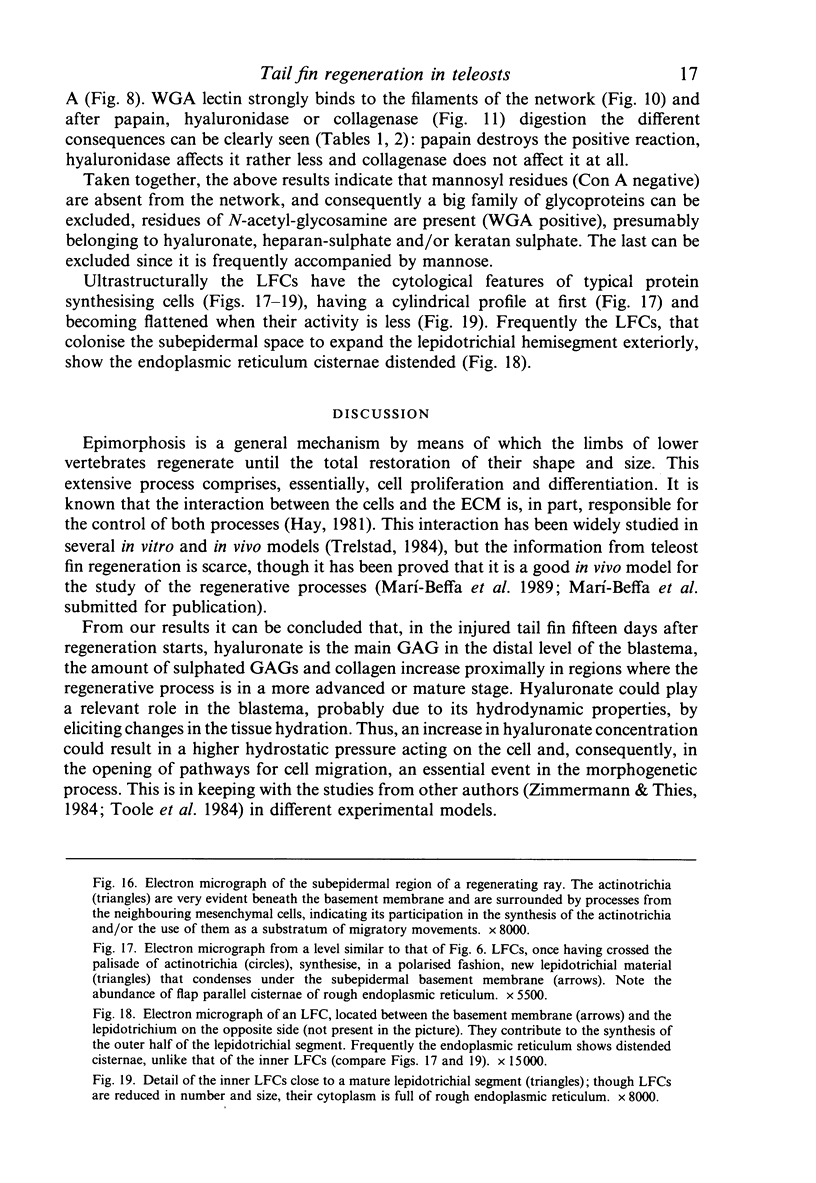
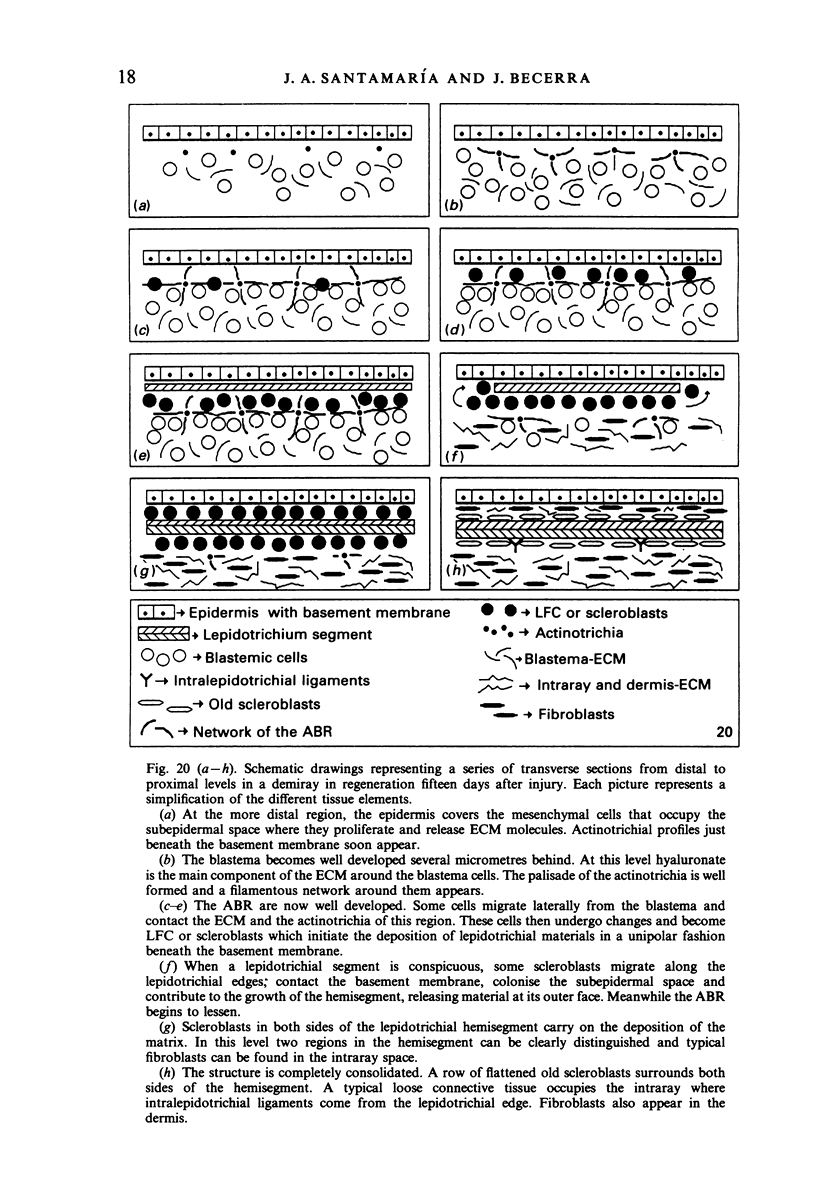

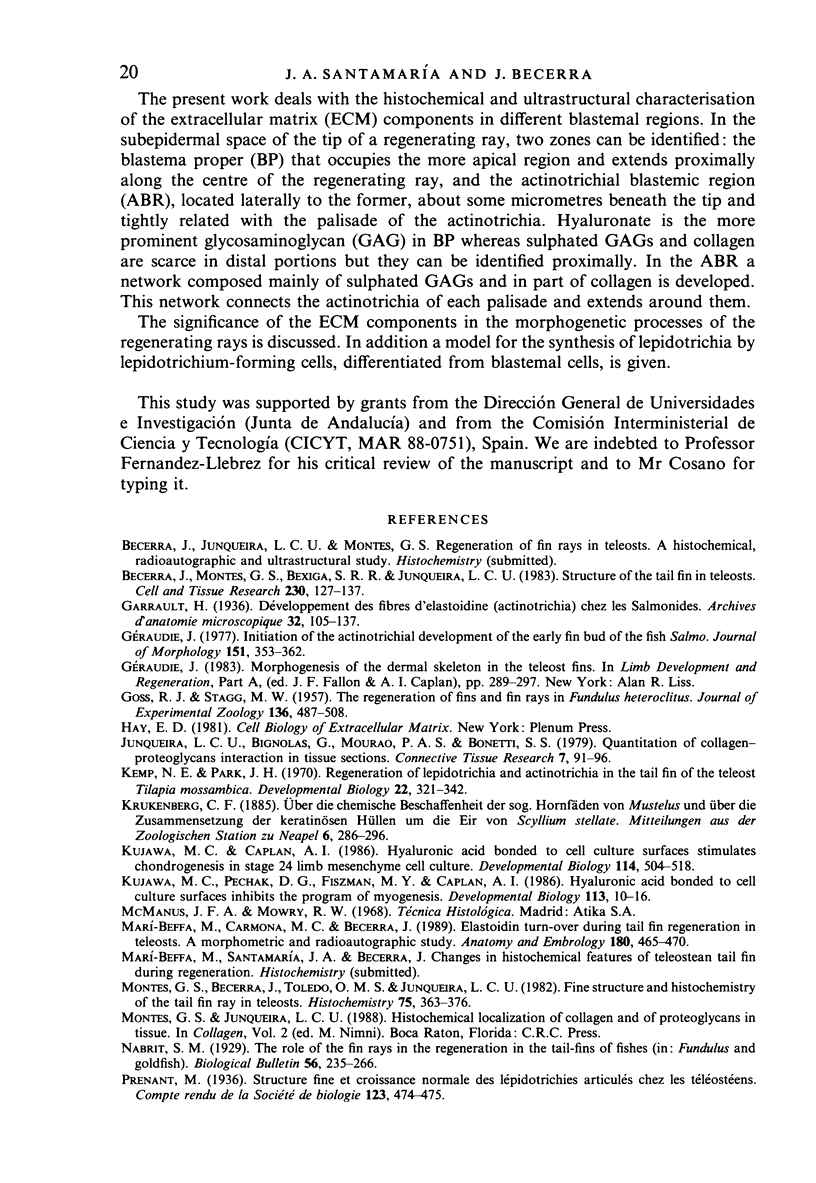

Images in this article
Selected References
These references are in PubMed. This may not be the complete list of references from this article.
- Becerra J., Montes G. S., Bexiga S. R., Junqueira L. C. Structure of the tail fin in teleosts. Cell Tissue Res. 1983;230(1):127–137. doi: 10.1007/BF00216033. [DOI] [PubMed] [Google Scholar]
- GOSS R. J., STAGG M. W. The regeneration of fins and fin rays in Fundulus heteroclitus. J Exp Zool. 1957 Dec;136(3):487–507. doi: 10.1002/jez.1401360306. [DOI] [PubMed] [Google Scholar]
- Géraudie J. Initiation of the actinotrichial development in the early fin bud of the fish, Salmo. J Morphol. 1977 Mar;151(3):353–361. doi: 10.1002/jmor.1051510304. [DOI] [PubMed] [Google Scholar]
- Géraudie J. Morphogenesis of the dermal skeleton in the teleosts fins. Prog Clin Biol Res. 1983;110(Pt A):289–297. [PubMed] [Google Scholar]
- Junqueira L. C., Bignolas G., Mourão P. A., Bonetti S. S. Quantitation of collagen - proteoglycan interaction in tissue sections. Connect Tissue Res. 1980;7(2):91–96. doi: 10.3109/03008208009152293. [DOI] [PubMed] [Google Scholar]
- Kemp N. E., Park J. H. Regeneration of lepidotrichia and actinotrichia in the tailfin of the teleost Tilapia mossambica. Dev Biol. 1970 Jun;22(2):321–342. doi: 10.1016/0012-1606(70)90157-0. [DOI] [PubMed] [Google Scholar]
- Kujawa M. J., Caplan A. I. Hyaluronic acid bonded to cell-culture surfaces stimulates chondrogenesis in stage 24 limb mesenchyme cell cultures. Dev Biol. 1986 Apr;114(2):504–518. doi: 10.1016/0012-1606(86)90214-9. [DOI] [PubMed] [Google Scholar]
- Kujawa M. J., Pechak D. G., Fiszman M. Y., Caplan A. I. Hyaluronic acid bonded to cell culture surfaces inhibits the program of myogenesis. Dev Biol. 1986 Jan;113(1):10–16. doi: 10.1016/0012-1606(86)90103-x. [DOI] [PubMed] [Google Scholar]
- Marí-Beffa M., Carmona M. C., Becerra J. Elastoidin turn-over during tail fin regeneration in teleosts. A morphometric and radioautographic study. Anat Embryol (Berl) 1989;180(5):465–470. doi: 10.1007/BF00305121. [DOI] [PubMed] [Google Scholar]
- Montes G. S., Becerra J., Toledo O. M., Gordilho M. A., Junqueira L. C. Fine structure and histochemistry of the tail fin ray in teleosts. Histochemistry. 1982;75(3):363–376. doi: 10.1007/BF00496739. [DOI] [PubMed] [Google Scholar]
- Ruoslahti E. Proteoglycans in cell regulation. J Biol Chem. 1989 Aug 15;264(23):13369–13372. [PubMed] [Google Scholar]
- Toole B. P. Developmental role of hyaluronate. Connect Tissue Res. 1982;10(1):93–100. doi: 10.3109/03008208209034409. [DOI] [PubMed] [Google Scholar]
- Toole B. P., Gross J. The extracellular matrix of the regenerating newt limb: synthesis and removal of hyaluronate prior to differentiation. Dev Biol. 1971 May;25(1):57–77. doi: 10.1016/0012-1606(71)90019-4. [DOI] [PubMed] [Google Scholar]
- Wood A. Early pectoral fin development and morphogenesis of the apical ectodermal ridge in the killifish, Aphyosemion scheeli. Anat Rec. 1982 Dec;204(4):349–356. doi: 10.1002/ar.1092040408. [DOI] [PubMed] [Google Scholar]
- Wood A., Thorogood P. An analysis of in vivo cell migration during teleost fin morphogenesis. J Cell Sci. 1984 Mar;66:205–222. doi: 10.1242/jcs.66.1.205. [DOI] [PubMed] [Google Scholar]
- Zimmermann B., Thies M. Alterations of lectin binding during chondrogenesis of mouse limb buds. Histochemistry. 1984;81(4):353–361. doi: 10.1007/BF00514329. [DOI] [PubMed] [Google Scholar]
















